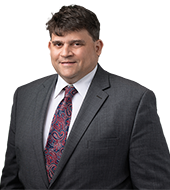COVID-19: New York State Passes Law Requiring COVID-19-Related Paid Sick Leave
To assist employees impacted by COVID-19, New York State has enacted an immediately effective law requiring all employers to offer job protection and certain employers to supply paid sick leave to employees subject to a “mandatory or precautionary order of quarantine or isolation.”[1] All such employees must be afforded job protection throughout the period of the order. The amount of paid sick leave, if any, these employees must receive depends on the number of employees private employers had as of January 1, 2020 as well as their net income in the prior tax year:
- Employers with 10 or fewer employees and a net income of less than $1 million need not provide paid sick leave, but rather, unpaid sick leave.
- Employers with 10 or fewer employees and a net income of $1 million or more must provide at least five days of paid sick leave.
- Employers with 11-99 employees must provide at least five days of paid sick leave.
- Employers with 100 or more employees and all public employers irrespective of their number of employees must provide at least 14 days of paid sick leave.
The law specifies that “[s]uch leave shall be provided without loss of an officer or employee’s accrued sick leave.” During the period of mandatory or precautionary quarantine or isolation, and after their employees have used any paid sick leave under the law, certain employees are eligible for paid family leave benefits and short-term disability benefits, subject to certain limits.
However, there are a few exceptions. The new law does not apply “where an employee is deemed asymptomatic or has not yet been diagnosed with any medical condition and is physically able to work while under a mandatory or precautionary order of quarantine or isolation, whether through remote access or other similar means.” Additionally, any paid sick leave or other paid benefits under the new law may not be provided to employees who are subject to a mandatory or precautionary order of quarantine or isolation if the following conditions are all met: (1) they were subject to the order due to their return to the U.S. from a country for which the Centers for Disease Control and Prevention issued a level 2 or 3 travel health notice; (2) such travel was not taken as part of their employment or at their employer’s direction; and (3) the employees were given notice of the travel health notice and the law’s limitation on eligibility for paid sick leave and other paid benefits before they engaged in the disqualifying travel. Employees to whom these conditions apply must be able to use any employer-provided accrued leave, and if they have no such leave, they must be given unpaid sick leave during the quarantine or isolation.
After coming back from leave due to mandatory or precautionary quarantine or isolation, employees must be returned to the position they held before they took such leave with the same pay and other terms and conditions of employment. Employers are prohibited from discriminating or retaliating against employees for taking leave under the new law. Provisions extending workers’ compensation benefits for certain employees affected by mandatory or precautionary quarantine or isolation are also included in the new legislation.
Notably, the new law provides that if the federal government passes a law offering sick leave and/or employee benefits to employees in connection with COVID-19, the state law’s provisions shall extend to covered employees, including with respect to paid sick leave and other paid benefits, only to the extent they exceed the benefits offered under such federal law.
Notes:
[1] “Mandatory or precautionary order of quarantine or isolation” is defined to include such an order “issued by the state of New York, the department of health, local board of health, or any government entity duly authorized to issue such order due to COVID-19.”
This publication/newsletter is for informational purposes and does not contain or convey legal advice. The information herein should not be used or relied upon in regard to any particular facts or circumstances without first consulting a lawyer. Any views expressed herein are those of the author(s) and not necessarily those of the law firm's clients.





